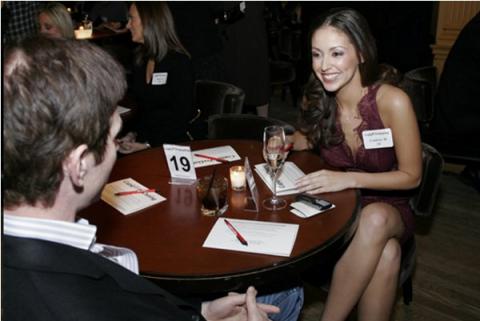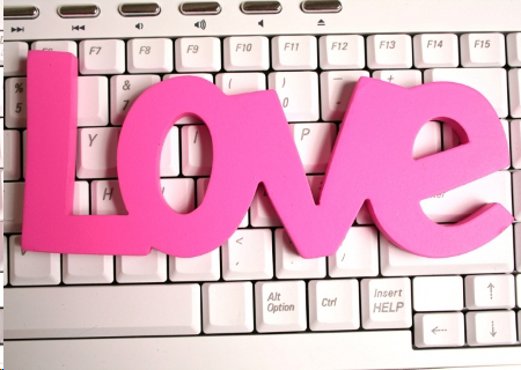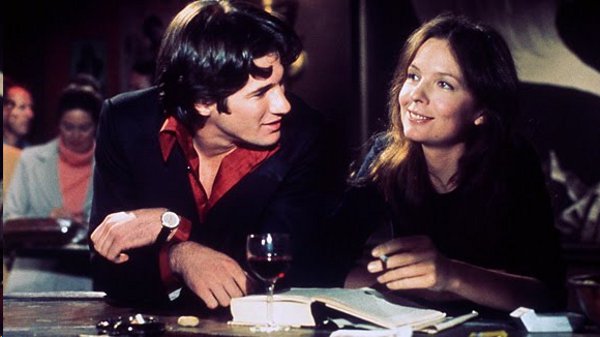Looking for Mr. Goodbar in the 21st Century

Editor’s note: The individuals interviewed for this article preferred anonymity and requested that the writer use only their first name or nickname.
For those of us who spent countless adolescent years (not to mention money and brainpower) digesting hefty spoonfuls of Walt Disney’s saccharin fairytales, we covet happily-ever-after endings well into adulthood – a fantastical fixation that persists regardless of logic. Up until quite recently, traditional standards for courtship and compatibility considerations operated entirely in the flesh. Local religious congregations or Boy and Girl Scout clubs at one time formed networks for eligible young adults and provided ample opportunities for supervised socialization.
Otto, a 20-something male from New Jersey offers a sentimental reality-check. “[My dad] was telling me about the 60s…when a guy would drive past a house, hoping she’d be outside. Now you just sit at home in a dark room by a computer, waiting for her to do the same.” Modern technology, both blessing and curse, sterilizes and inhibits what should be tangible expressions of passion – romance. As a society, we are electronically plugged-in and physically checked-out.
Flirting—the penultimate romance language—is an endangered concept in 21st-century America. Gone are the face-to-face conversations, where exposure to body language and tone of voice permit our pheromones to chemically determine compatibility.
“People just aren’t willing to engage in public. It’s so difficult to get someone to make eye contact…” claims Jane, a 20-something New Yorker. Sure, the ‘90s bar scene briefly provided a setting in which singles could mingle, but it seems unlikely that these inebriated conversations ever successfully paired up people beyond the following morning.

A variety of websites are programmed to create technological connections for the romantically challenged and can potentially provide ample information about who really is out there. Websites such as Match.com, JDate, or okcupid focus on specific components of compatibility such as religious affiliation, sexual orientation, or ethnic preference; additionally, certain websites or events will be better suited for you depending on your age or relationship goals, ranging from physical flirtations to long-term commitments. Generally speaking, okcupid targets the 20- to 30-somethings, not immediately interested in marriage or children, whereas Match.com creates a forum for relationship-hungry singles.
Due to the striking number of blissful couplings, engagements, or weddings amongst friends and family—a flurry of starry-eyed lovebirds bubbling, “Can you believe it? We met on [insert dating site here]!”—I can roll my eyes all I want at those Match.com or eHarmony saps, but fact of the matter is: I’m the single one and have no idea how to land a date. And so I felt compelled, as a cynical 26-year-old woman, to experience these matchmaking services before passing judgment.
“Online dating totally works!” exclaims Cindy, a 30-something woman from Seattle. Apparently working well, I think. Currently engaged to a man found on Match.com, this 30-something has her wedding date set for later this year. Noticing my raised eyebrow, she adds matter-of-factly, “It’s not about getting married; it’s about not being single. People enjoy companionship.”
And though free trial memberships exist on most sites, severe limitations hamper one’s ability to effectively utilize the services. Restrictions may include minimal profile options, inability to send or receive messages, and zero photo access. Deal-breaker. How can anyone determine attraction without at least catching a glimpse of the potential date? Mark, a 20-something male from Connecticut, a self-proclaimed Match.com professional, explains, “Men put emphasis on photos…I stopped looking at profiles with less than four pictures because the level of misrepresentation was remarkable.”

Apparently, my online dating survival and success are contingent upon my ability to visually present myself and define personal goals, expectations, and boundaries. Honesty must remain my policy throughout the profile-creation process, starting with sincere personal information and ending with up-to-date photos.
Females, on the other hand, seem to place great emphasis on a potential date’s ability to communicate in written or oral form. “If I don’t like the language he uses in emails, then we don’t proceed to a date,” Cindy explains. But this screening process, weeding out the undesirables, can feel like a household chore; responding to messages and scheduling dates become obligations as opposed to what they should be – joy.
“I know the experience for women on [any dating site] is way different than it is for men; as the gatekeepers, I'm sure women get [loads] of messages – a lot of times from creeps,” says Mike.
eHarmony insists their paid subscription is worthwhile because the service mandates initial screening, making it “the #1 trusted relationship site.” But “#1” for whom? Co-founder Neil Clark Warren, a Christian theologian and marriage counselor, patented a Compatibility Matching System® so as to pair people in life-long relationships. Through algorithms and Evangelical values such as Focus on the Family, this heterosexual haven did not always allow homosexual partnerships. At one point, eHarmony claimed that limited information regarding successful same-sex relationships stymied the website’s ability to determine compatibility. In lieu of discrimination lawsuits, however, the masterminds behind eHarmony created a sibling site: CompatiblePartners – a cop-out that smacks of 1950s Jim Crow laws and a separate but equal quality of life.
It doesn’t actually matter how compatible you and your “match” are according to most of these sites. A computer cannot truly determine attraction, and neither can you, without actually meeting your “match” in person. “Get to the date!” laughs 30-something Diane.
Additionally, okcupid.com remains user-friendly, free, and checks discrimination at the door. Why pay for essentially the same service? “With okcupid, I get a decent read on who the woman is before I actually meet her,” admits Rob, a 20-something male living in San Francisco. He continues, “I didn't join [okcupid] just to troll for booty…I joined because it's easier for me to connect and relate to women this way. It's all about trying to find the good middle ground…like everything else in life.”
Author Bio:
Anna Elizabeth Mazzariello is a contributing writer at Highbrow Magazine.
Photos: livemoreawesome.com; eHarmony.com; scene from "Looking for Mr. Goodbar": Paramount Pictures.






























































































































































































































































































































